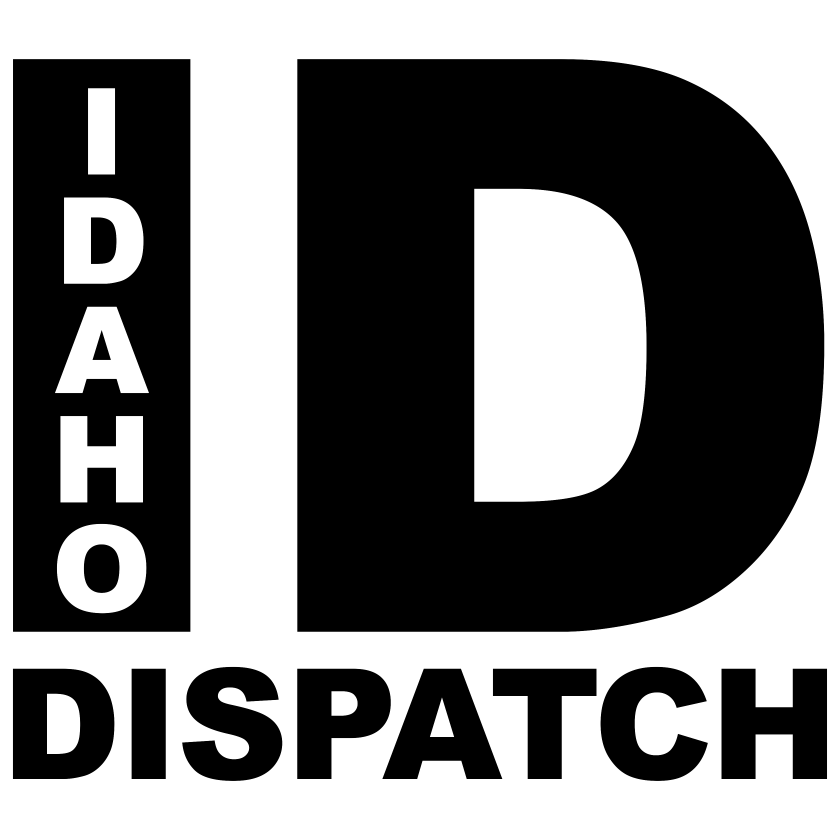
The Ramifications and Reality of Breaching the Dams of the Pacific Northwest – Part 1
By Sarah Clendenon • April 7, 2024What are the ramifications and true reality of breaching the dams in the pacific northwest (PNW)?
Idaho Dispatch brought you this article last December when the Biden Administration reached an agreement with Oregon, Washington, and four Pacific Northwest Native American Tribes. Now we will look back at the history and examine the myriad aspects of this topic which must be discussed and analyzed thoroughly. A short list to begin includes: the population and health of salmon, the irrigation/farming/water rights which will be affected, the financial impacts, the shipping and barging system, and hydroelectric power.
We start with history, legal aspects, a brief touching on the introduction to the salmon topic, and an introduction to the shipping and barging system. Each has far reaching effects on the PNW, as well as the entire nation. Future articles will discuss additional points of this multi-faceted issue.
A short explanation of the history of the discussion can be found in this paper titled, Irrigation Sector Economic Impacts on the Lower Snake River – Benchmark Review for Dam Breaching and Mitigation Costs.
“The LSR [Lower Snake River] projects–Lower Granite, Little Goose, Lower Monumental, and Ice Harbor—were constructed during the 1962-1975 period. Since construction, about half of the projects’ operating life has been subjected to Endangered Species Act (ESA) litigation, with an initial ESA violation filing made by EarthJustice in 1992.
The Federal Courts have upheld several operating challenges levied by EarthJustice, representing about ten regional environmental and sport fishing groups, with support from others. Over the course of thirty years, project operations have been significantly altered to obtain survival improvements to migrating juvenile salmon and steelhead and returning adult fish. These changes have principally affected hydro power production, to increase flows over the spillways, as opposed to power production, as well as other operational and system changes.
AdvertisementThe project operations to date have not directly affected irrigation operations along the river. The irrigation pumping systems rely on stable reservoir levels created by the LSR dams, and portions of the Upper McNary Pool reaching into the tailrace of the Ice Harbor Dam. But things could change.
In 2016, U.S. Federal District (OR) Judge Michael Simon vacated the 2014 Biological Opinion for Columbia-Snake River hydro project operations, a centerpiece for fish protection under the Endangered Species Act (ESA). He accepted the argument by the state of Oregon, EarthJustice, and other plaintiffs that the Columbia River System Operation (CRSO) agencies had failed to include adequate operation measures to protect thirteen “listed” salmon and steelhead species from “risk of extinction.” In doing so, Judge Simon further ordered the CRSO agencies to prepare a new Environmental Impact Statement (EIS), that would become the technical foundation for a new Biological Opinion, changing hydro project operations. His order was very specific, in that he told the agencies to review in detail a Lower Snake River dam breaching/drawdown alternative.
The CRSO agencies completed the Final EIS in September 2020. It was immediately challenged by the BiOp litigation plaintiffs, EarthJustice, et al., the state of Oregon, and with Tribal support. Rather than file immediately in 2021 for injunctive relief, the plaintiffs agreed to pursue a litigation “stay” with the federal agencies (U.S. Army Corps of Engineers, Bonneville Power Administration, U.S. Bureau of Reclamation-Interior, and NOAA Fisheries). The stay period was to determine if a settlement agreement could be fashioned that would meet the plaintiffs’ dam breaching objective and still mitigate for major river system economic industries, the electric power production, Lower Snake River (LSR) barge navigation, and irrigation projects along the Ice Harbor-Upper McNary pools.
AdvertisementProceeding concurrently with the Federal EIS Process, the Washington State legislature approved funding for a stakeholder study to address issues associated with the possible removal of the four LSR dams. This study was supported by Gov. Inslee and Sen. Murray. Its two conclusions were: 1) the LSR dams should be breached to protect/restore salmon and steelhead recovery; and 2) dam breaching should be conditional on providing “replacement services” to the major industries being affected. Recognizing the technical deficiencies associated with the first study, the legislature authorized a second study to deal more thoroughly with the dam breaching proposition; during the 2023 legislative session, legislators and Gov. Jay Inslee approved funding for further state review of LSR dam breaching impacts to the irrigation sector.”
The full document can be found here for additional study.
Dam Breaching paperImportant to note from this article in August of 2022, in regard to one aspect of the salmon topic, the state of Idaho responded to a motion to stay the legal proceedings (a “stay” is a delay until a future date):
“Idaho, an intervenor-defendant, filed a response to the motion saying it does not oppose the stay, but does not agree with some of the statements in exhibits, including the actions related to reintroducing fish in the upper Columbia or Snake rivers that could enter Idaho without the state’s consent. The response noted that a state law prohibits introduction or reintroduction of any species into the state without approval from the state Legislature and governor. The response also said the state is opposed to any actions that lead to breaching the four lower Snake River dams but recognizes that breaching will be examined as a part of the process.”
The shipping and barging along the Columbia and Snake Rivers are significant to the farming exports of Idaho. This flier from the Pacific Northwest Waterways Association says,
PNWA doc on barging“The Columbia Snake River System is one of the leading trade gateways in the United States. Over 8.6 million tons of cargo are moved by barge on the inland portion of the system, feeding the deep draft lower Columbia River which transported over 51 million tons of cargo in 2020. The Columbia Snake River System is the top wheat export gateway in the nation, second for soy and corn exports, and tops on the West Coast for autos, wood and mineral bulk exports. The inland and deep draft portions of the system work together to provide a vital link between U.S. growers and manufacturers with global customers.”
This article from Capital Press in Oregon adds,
“Barging would no longer be a viable transportation method…
“The dams hold back 80 to 100 feet of water, creating navigation pools deep enough to travel to Lewiston, Idaho,” said Rob Rich, vice president of marine services for Shaver Transportation Co., a tug and barge company.
“No dams, no locks, no depth of water, no barge transport,” Rich said.
“Without the Snake River dams, navigation would go only as far upstream as East Pasco and Burbank, Wash.,” he said. Rich estimates 650 to 700 barge loads of wheat originate on the Snake River each year. “Each barge carries 3,600 tons, or 120,000 bushels, of wheat,” Rich said.
“About 28% of Idaho’s wheat crop goes onto barges,” said Scott Corbitt, general manager of the Port of Lewiston, which is upstream from the four dams. “Loss of barging would increase grain shipping costs by 30 to 50 cents per bushel, or $70 million a year,” Corbitt estimated. “Those added costs would have to be absorbed by farmers.”
The impact to Idaho farmers is undeniable, which will also certainly affect food prices for consumers. This, as well as much more, must be considered as part of an honest discussion regarding the true effects of the dam breaching decision.
Feature photo of the McNary Dam courtesy of Tony Webster/Flickr, found in the article cited above.
Tags: Agriculture, Barging, Biden Administration, Brad Little, Colombia River, Columbia Basin Initiative, Columbia River, Crops, Dam Breaching, Dams, Environment, Exports, Farming, Food prices, Hydroelectric power, Idaho, Jay Inslee, Jim Risch, Mike Simpson, Native American Tribes, Nez Perce, Oregon, Potatoes, Salmon, Scott Bedke, Shipping, Snake River, Steelhead, Tina Kotek, Washington, Water, Water Rights, Wheat
15 thoughts on “The Ramifications and Reality of Breaching the Dams of the Pacific Northwest – Part 1”
Leave a Reply

















Does anyone sense a shake-down in the making?
A powerful remedy to stop this foolishness is right in front of us this Primary: Vote for Scott Cleveland and retire permanently the main problem, Mike Simpson.
You mean Mike I want to tear out all dams. Simpson! Have to get rid of this disaster.
Bingo!
Great article with lots of details and specifics! Thank you for writing an in-depth piece!
Everything is about cutting off the food supply. Look at every single nation where they have taken control in the past 200 years. They always have a creative series of lies to get to the same goal. Depopulation thru starvation, to put an end to any resistance.
Something is not adding up for me here:
700 barges x 3600 tons/barge = 2.5 million tons << "Over 8.6 million tons of cargo are moved by barge on the inland portion of the system, feeding the deep draft lower Columbia River which transported over 51 million tons of cargo in 2020."
and…
“Loss of barging would increase grain shipping costs by 30 to 50 cents per bushel, or $70 million a year,”
$0.50/bushel x 120,000 bushels/barge x 700 barges = $42 million
Corbitt estimated. “Those added costs would have to be absorbed by farmers.” but immediately following is state that this "will also certainly affect food prices for consumers.
So which is it, do the farmers absorb the cost at the risk of losing out to wheat suppliers not using the barge system, or do the export consumers pay more for their Idaho supplied wheat? Sorry, but I'm confused.
Excellent. This well written article can be condensed into:
Dump Mike Simpson.
1/4 century of lip service, platitudes, selling us to the feds.
They would have a better argument if the lower Columbia below the dams had huge returns of Salmon, however they suffer as do the up river fish with low returns. Dams are a hinderance to fish returns, but the real problem seems to be a lack of Salmon out of the Pacific to which dam removal will not help. Also factor in the disaster of dam removal on the Kalamath basin and there is a reason to continue with the dams until better answers to these problems are found.
” the real problem seems to be a lack of Salmon out of the Pacific to which dam removal will not help.” Same for Klamath and rivers south of it.
The long term consequences to farming, business and tourism on the Snake River as well as the increased cost to consumers overall that Inslee doesn’t have to answer for is a good reason to leave the dams along. Also no one is talking about the loss of hydroeldctric power. What a foolhardy plan in my opinion. Everyone knows a lot of fish are lost long before they reach the dams on the Snake.
If the Biden administration, radical environmental groups and Indian Tribes are meeting in secret making deals behind closed doors, it shows that they know what they are doing is wrong and won’t be approved by the majority of citizens in the Pacific Northwest. Decisions like this must be debated in public, allowing all affected groups to have a voice, based on facts and not political reasons. These people that hide in the shadows are up to no good… and are making off with $billions of taxpayer money.
Join Klamath Dam Removal page on Facebook and see the ecological disaster that has been created on the biggest dam removal in history. The Klamath will probably never recover. It has been nothing but a nightmare. State of Emergency has been declared by our Board of Supervisors. They killed the river with the removals.
The whole thing is about control. Control of the food and power. If they take out the more efficient, economical, and clean power source, we will all be dependent on the non-efficient, high maintenance, environmental and animal damaging windmills.
They want control from cradle to grave.